Evolutionary Ecology
The department of Evolutionary Ecology gathers complementary skills in behavioural ecology, population dynamics, population biology, community ecology, and methodology (statistics and modelling). The research done in the department aims at studying how animal species evolve in a changing world by understanding the causes of the evolution of traits, adaptations and interactions. For that, we consider different levels of organization from individuals to populations and communities. Because organisms cannot be considered isolated from other biotic factors, we consider pathogens but also competing species within communities.
We study how individuals adapt to their environments that are largely impacted by anthropic pressures, and how life history traits and behaviour evolve in response to these pressures. Although we mainly focus on phenotype, we more and more consider the mechanistic link between the genotype and the phenotype. We develop the theoretical framework of our discipline through a conceptual and modeling approach. In parallel, we test hypotheses that arise from theoretical predictions through experimental, comparative and observational approaches on different biological models (insects, birds, mammals). Experimental approaches are developed in the laboratory (insect model) and in natura (bird, insect and mammal models). Observational and comparative research is mainly concerned with vertebrates. Our approaches are also, and increasingly, interested in the mechanisms of adaptive responses. In addition to the classical approaches of demographic analysis and trait change, methods of ecophysiology, chemical ecology and molecular biology are used.
Our department hosts several long-term studies of wild populations of different species. These long-term studies offer a valuable way to understand how biotic and abiotic factors affect individuals’ life history traits, and the functioning of populations in natura. Five populations of mammalian species are thus monitored for several years (more than 40 years on roe deer, 30 on Alpine marmots, 25 years on cats, 16 years on zebras, and 20 years on impala). Two of our study sites (La Sassière in Vanoise National Park (Alpine marmots) and Hwange National Park) have been certified as “Site d’Etude en Ecologie Globale” (SEEG), and two (ZA “Hwange” and ZA “Antarctic and sub-Antarctic”) were certified as “Zone Atelier” by the CNRS.
The department of Evolutionary ecology is also largely involved in training activities. Lastly, we also have strong socio-economic relationships. Indeed, because we address questions of major societal interest (global warming, public health) we tightly collaborate with socio-economic partners (Office Français de la Biodiversité, Vanoise National Park, Hwange National Park in Zimbabwe, Office National des Forêts, etc.) and participate to general public and media events.
Publications
Display of 1951 to 1980 publications on 2449 in total
A New Method for Assessing the Effect of Replication on DNA Base Composition Asymmetry
incollection . 7 : 379-381
Journal article
see the publicationSeqinR 1.0-2: a contributed package to the R project for statistical computing devoted to biological sequences retrieval and analysis
incollection . -- : 207-232
Journal article
see the publicationDifferential energy allocation as an adaptation to different habitats in the parasitic wasp Venturia canescens
Evolutionary Ecology . 21 : 669-685
Journal article
see the publicationChapter 11. Managing Large Herbivores in Theory and Practice: Is the Game the Same for Browsing and Grazing Species?
The Ecology of Browsing and Grazing . : 293-307
Book chapter
see the publicationTesting sexual segregation and aggregation: old ways are best
Ecology . 88 ( 12 ) : 3202-3208
DOI: 10.1890/07-0129.1
Journal article
see the publicationThe canine distemper epidemic in Serengeti: are lions victims of a new highly virulent canine distemper virus strain or is pathogen circulation stochasticity to blame?
Journal of the Royal Society Interface . 4 : 1127-1134
Journal article
see the publicationThe role of maternal antibodies in the emergence of severe disease as a result of fragmentation
Journal of the Royal Society Interface . 4 : 479-489
Journal article
see the publicationToxoplasmosis in prey species and consequences for prevalence in feral cats: not all prey species are equal
Parasitology . 134 ( Pt.14 ) : 1963-71
Journal article
see the publicationMultiple molecular evidences for a living mammalian fossil
Proceedings of the National Academy of Sciences of the United States of America . 104 ( 18 ) : 7495-7499
Journal article
see the publicationMorphometrics of the Late Devonian conodont genus Palmatolepis: phylogenetic, geographical and ecological contributions of a generic approach
Journal of Micropalaeontology . 26 : 61-72
DOI: 10.1144/jm.26.1.61
Journal article
see the publicationMorphometrics of the Late Devonian conodont genus Palmatolepis: phylogenetic geographical and ecological contributions of a generic approach
Journal of Micropalaeontology . 26 : 61-72
Journal article
see the publicationInteractive Multivariate Data Analysis in R with the ade4 and ade4TkGUI Packages
Journal of Statistical Software . 22 : 1-14
Journal article
see the publicationPrevalence of Toxoplasma Gondii in small mammals from the ardennes region France
Folia Parasitologica . 54 : 313-314
Journal article
see the publicationNatal dispersal of European hare in France
Journal of Zoology . 273 : 426-434
Journal article
see the publicationClimate changes and post-nuptial migration strategy by two reedbed passerines
Climate Research . 35 : 147-157
DOI: 10.3354/cr00721
Journal article
see the publicationInfluence du type de sol et du mode d’occupation des sols sur la quantité d’ADN extraite et la densité des communautés bactériennes indigènes
AFEM (Association Francophone d'Ecologie Microbienne) . : n.p.
Poster
see the publicationMicrobiogéographie à l'échelle du territoire national
AFEM (Association Francophone d'Ecologie Microbienne) . : n.p.
Conference paper
see the publicationBiological control of Striga hermontica by Cubiterms mound powder amendment in sorghum culture
Applied Soil Ecology . 37 ( 3 ) : 175-183
Journal article
see the publicationImprovement of Cupressus atlantica Gaussen growth by inoculation with native arbuscular mycorrhizal fungi
Journal of Applied Ecology . 103 : 683-690
Journal article
see the publicationDetection of recombinant human erythropoietin in urine for doping analysis: interpretation of isoelectric profiles by discriminant analysis
Electrophoresis . 28 ( 12 ) : 1875-1881
Journal article
see the publicationDynamique d'un système hôte-parasitoïde en environnement spatialement hétérogène et lutte biologique Application au puceron Aphis gossypii et au parasitoïde Lysiphlebus testaceipes en serre de melons
Thesis
see the publicationEvolution of an invasive rodent on an archipelago as revealed by molar shape analysis: the house mouse in the Canary Islands
Journal of Biogeography . 34 ( 8 ) : 1412-1425
Journal article
see the publicationQuantitative conodont-based approaches for correlation of the Late Devonian Kellwasser anoxic events
Palaeogeography, Palaeoclimatology, Palaeoecology . 250 : 114-125
Journal article
see the publicationArbuscular mycorrhizal symbiosis can counterbalance the negative influence of the exotic tree species Eucalyptus camaldulensis on the structure and functioning of soil microbial communities in a sahelian soil
FEMS Microbiology Ecology . 62 ( 1 ) : 32-44
Journal article
see the publicationSmall but smart: the interaction between environmental cues and internal state modulates host-patch exploitation in a parasitic wasp
Behavioral Ecology and Sociobiology . ( 61 ) : 1409-1418
Journal article
see the publicationQuantitative risk assessment of listeria monocytogenes in french cold-smoked salmon: I. quantitative exposure assessment
Risk Analysis . 27 ( 3 ) : 683-700
Journal article
see the publicationInfectivity of Histomonas meleagridis in ducks
Avian Pathology . 35 ( 2 ) : 109-116
Journal article
see the publicationPopulation dynamics of grayling : modelling temperature and discharge effects.
Mathematical Modelling of Natural Phenomena . 1 ( 1 ) : 33-48
Journal article
see the publicationA multi-patch epidemic model with periodic demography, direct and indirect transmission and variable maturation rate
Mathematical Population Studies . 13 ( 3 ) : 153-177
Journal article
see the publicationPotential of a 16S rRNA-based taxonomic microarray for analyzing the rhizosphere effects of maize on Agrobacterium spp. and bacterial communities
Applied and Environmental Microbiology . 72 ( 6 ) : 4302-4312
DOI: 10.1128/AEM.02686-05
Journal article
see the publication
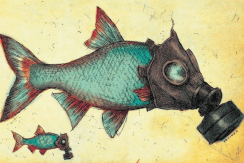
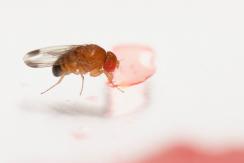
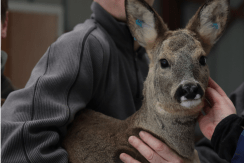
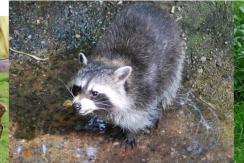
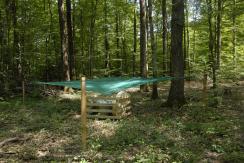
You also, comment on this article